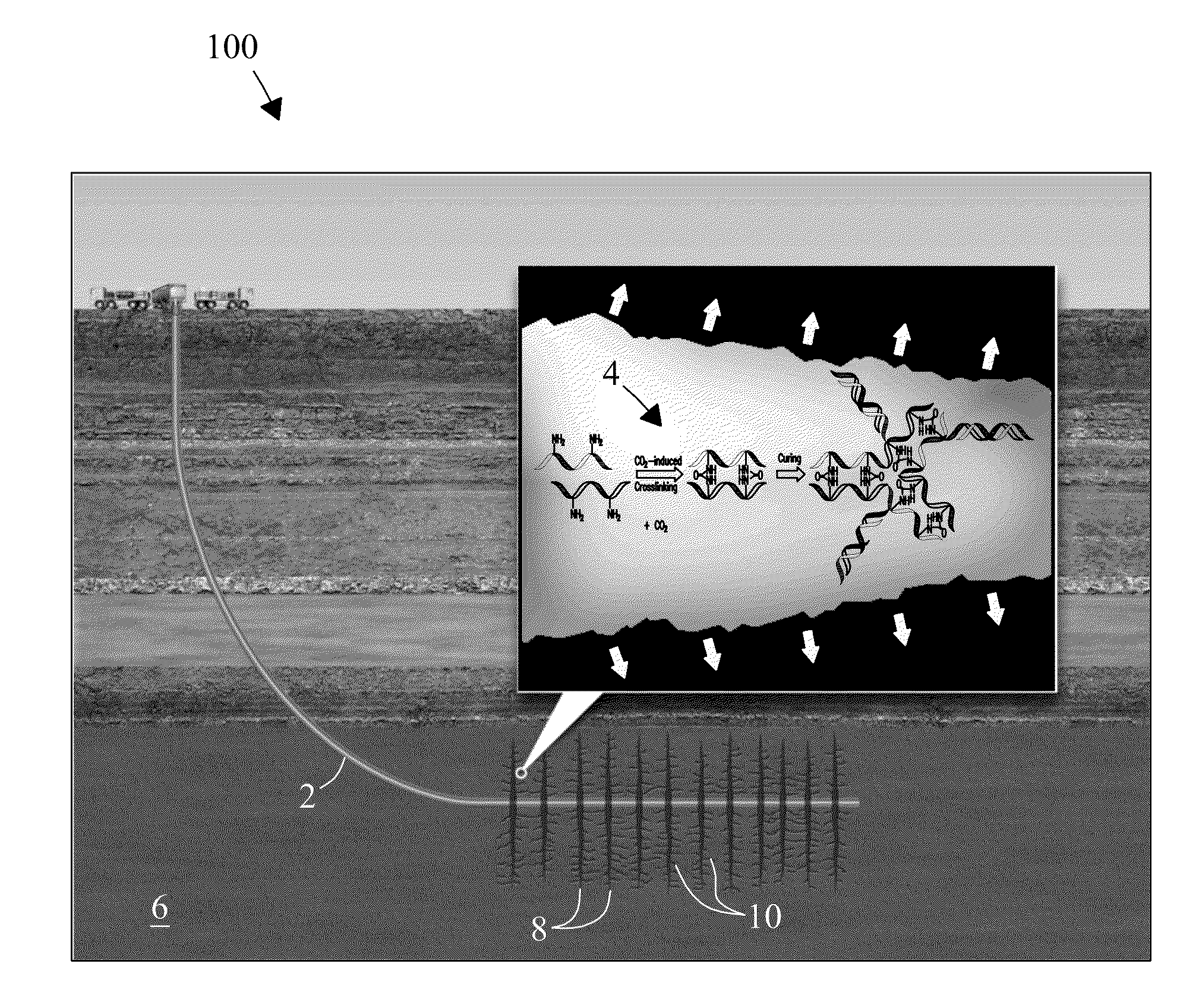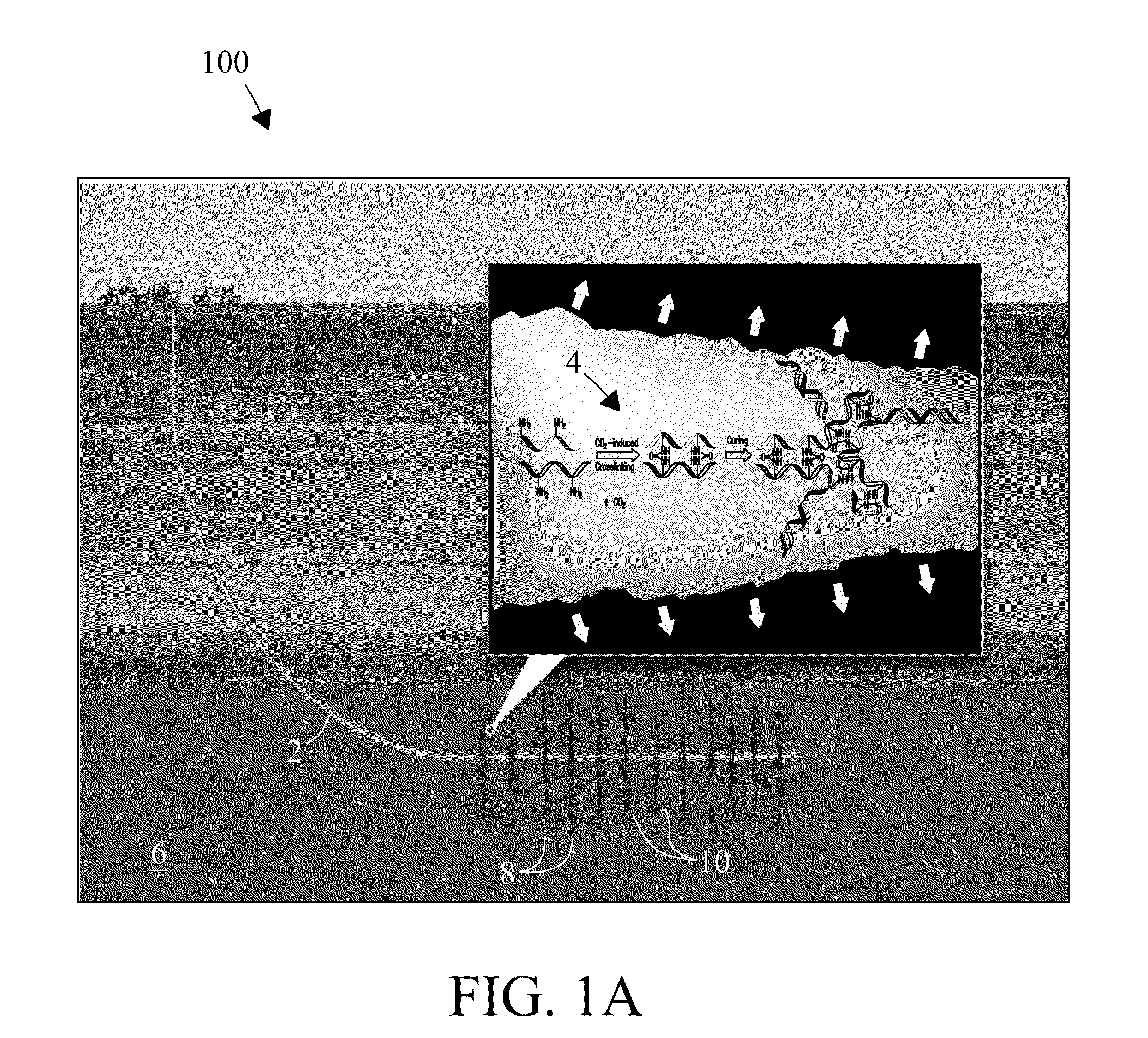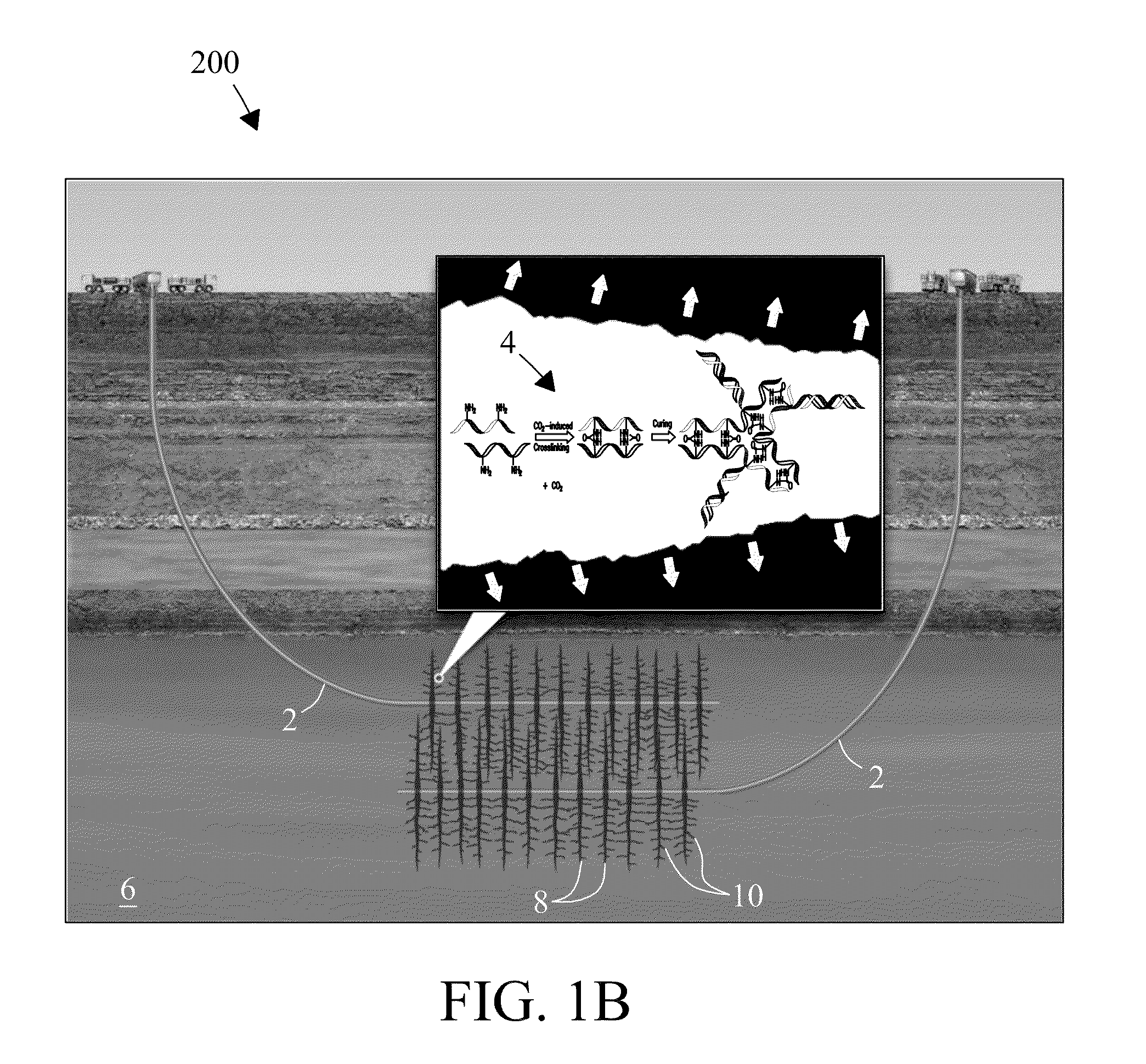Electrophilic acid gas-reactive fluid, proppant, and process for enhanced fracturing and recovery of energy producing materials
- Summary
- Abstract
- Description
- Claims
- Application Information
AI Technical Summary
Benefits of technology
Problems solved by technology
Method used
Image
Examples
example 1
Rheological Properties of PAA
[0064]Rheological properties of a 1 wt % polyallylamine (PAA) solution, 0.1% xanthan gum solution, and 1 wt % SDS (sodium dodecyl sulfate) solution were measured in a rheometer (e.g., a Physica MCR101 rheometer, Anton PAAR, Ashland, Va., USA) equipped with a temperature control system (e.g., a model C-PTD200, Peltier, Ashland, Va., USA) and a high-pressure reaction cell (e.g., CC25 / PR150, Ashland, Va., USA) (maximum temperature and pressure limits: 200° C. and 2000 psi) at a CO2 pressure of 2000 psi (136 atm) (1.38E+04 kPa) and a temperature of 190° C. For the rheology measurement, the pressure cell (vol.=26 mL) was first preheated to 90° C. Water or a chemical solution (13 mL) was then introduced into the cell through a port and heated to a final temperature of 190° C. CO2 was then introduced into the cell with an infusion pump (e.g., ISCO pump, Lincoln, Nebr. USA) in steps of about 100 psi (6.89 E+02 kPa) until the desired pressure was reached. Viscosi...
example 2
NMR Analyses of PAA
[0065]Polyallylamine (Gelest Inc., Morrisville, Pa., USA) was prepared as a 1 wt % solution in deionized water and introduced into a High Pressure Magic Angle Spinning rotor (HP MAS rotors) as an exemplary gas-reactive compound for 13C NMR chemical analysis. A rotor with a 7.5 mm O.D. and a 6.0 mm I.D. with a sample capacity of 450 μL was used equipped with a valve that allowed controlled exposure of an exemplary fracturing fluid of the present invention to pressurized gas. A 200 uL sample of a 1 wt % PAA solution was loaded into the rotor for scCO2 exposure at 72° C. and 86.2 bar (1250 psi) (8.62E+03 kPa). NMR spectra were collected in situ at temperatures over the range from 72° C. to 154° C. regulated within a temperature controlled oven (±0.1° C.) (e.g., a DC-256 oven, Thermal Product Solutions, White Deer, Pa., USA) monitored by two thermocouples within the HP-MAS rotor reaction chamber. Pressures (±1 psi or ±6.89 kPa) were measured with transducers from a du...
example 3
Effect of Temperature on Rheology of Expansion Polymer
[0068]Additional experiments on the reaction between PAA (polyallylamine) solution and CO2 were conducted at internal temperatures ranging from approximately 60° C. to 400° C. and pressures between about 110 atm and about 300 atm to understand the effect of temperature on the rheology of the PAA solution during the reaction with CO2. The high pressure cell was filled with 1 wt % PAA solution up to ˜40-50% level in the window before introducing CO2 at a range of external temperatures of 50° C., 100° C., 150° C., 200° C., 250° C., and 300° C., which correspond to the internal temperature of 58° C., 127° C., 196° C., 265° C., 333° C., and 402° C. based on the external and internal temperature calibration curve. Prior to CO2 injection, internal pressure of the high pressure cell containing PAA solution was ˜1 atm (1.01E+02 kPa) due to the presence of air and some water vapor at temperatures of 58° C.-196° C., and approximately 40 atm...
PUM
| Property | Measurement | Unit |
|---|---|---|
| Temperature | aaaaa | aaaaa |
| Fraction | aaaaa | aaaaa |
| Fraction | aaaaa | aaaaa |
Abstract
Description
Claims
Application Information
 Login to View More
Login to View More - R&D
- Intellectual Property
- Life Sciences
- Materials
- Tech Scout
- Unparalleled Data Quality
- Higher Quality Content
- 60% Fewer Hallucinations
Browse by: Latest US Patents, China's latest patents, Technical Efficacy Thesaurus, Application Domain, Technology Topic, Popular Technical Reports.
© 2025 PatSnap. All rights reserved.Legal|Privacy policy|Modern Slavery Act Transparency Statement|Sitemap|About US| Contact US: help@patsnap.com



